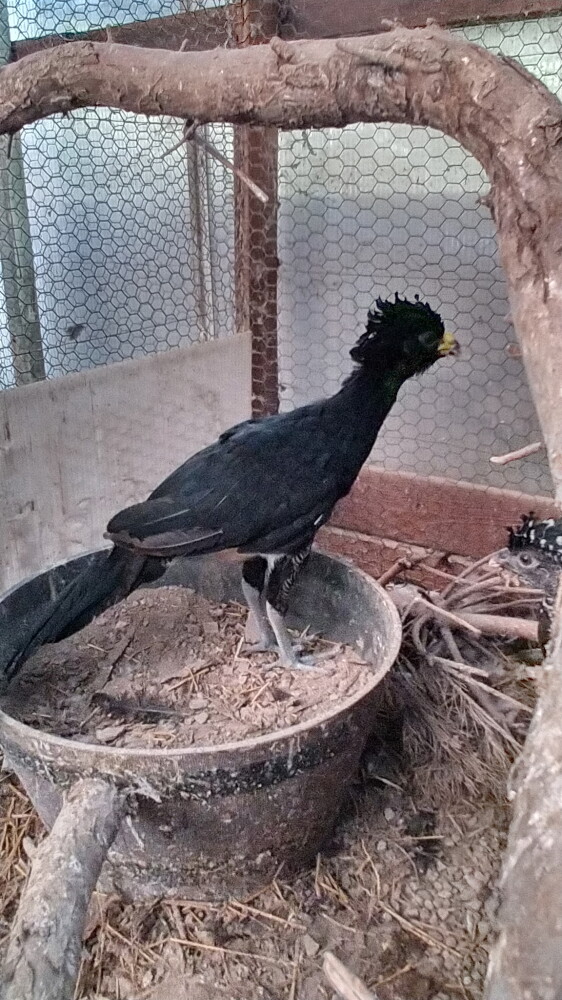Storks for Sale
(Ciconiidae)
When you think of storks, does the word “gangly” pop into your mind? These long-necked and leggy birds are waders ranging in height from two to five feet. They bear a slight resemblance to their relative, the heron, because of their lengthy legs and necks. The difference is storks have a stocky build. There are minor differences overall in stork families. In some species, the males and females look alike, which is called sexual dimorphism.

Surplus list
- Name: Bnk Bird Farms
- Posted: 10/20/2025
- Phone: 724 312 1593
- Email: Email Seller
- Location: Ohio
Cracids Black Curassow pairs and extra males Plain Chachalaca pair Lapwing Masked lapwing pairs Spurwing lapwings Feel free to reach out with any questions will consider trades for other cracids, ibis, or storks
Types of Storks for Sale
Stork Myths
Busting Myths: You Need to Know What Storks Actually Do Storks don’t deliver babies. Seriously. Literature, movies, and folklore perpetuate the myth, but it isn’t true. Those familiar images of infant-delivering storks are enchanting. But, a scientific look at the size and body structure of these waterfowl disproves the myth. Here’s the real scoop on storks.
Storks belong to the:
Family: Ciconiidae
Order Ciconiiformes
Want an uncomplicated way to differentiate between typical storks and wood storks? Look at the shape of their bills. Typical storks have bills that appear to be straight (or almost straight). The bills of wood storks curve downward as do the bills of ibises. Hence, wood storks were formerly called wood ibises. They are related to ibises but belong to a different order.
While wood storks and ibises have similar-looking bills, they differ in other ways. Storks are also related to flamingos and herons. Sometimes, they are even misidentified as members of the crane family.
All these other species share similar appearances with storks. But, storks are identifiable by their thin, long bills and their chunky builds.
Habitat and Range
Storks are primarily found in Africa, which is the native home to eight branches of the species. They are considered a wetland species. However, their range also includes Asia, Europe, Florida, and Argentina.
The habitat range of one species, the black neck stork, includes Australia. The New World is home to three other species: wood storks, jabirus, and maguari storks. White and black storks range as far as Europe, while the Oriental stork ranges to east Asia.
At a mere 32 inches, Abdim’s stork (Ciconia abdimii) is the smallest member of the family. Another name for it is the White-bellied stork. Most Africans believe it brings good luck and rain.
The largest stork, the Marabou, is also the least attractive family member. As carrion birds, they are often found wherever fish are cleaned, and scraps are thrown away. After all, why work hard to find food when you can get it for free?
Storks are considered voiceless because they have an undeveloped syrinx (vocal organ). They vocalize and communicate by hissing or clattering their bills. They fly by soaring upward on the thermals and then gliding to conserve their energy. With outstretched necks and dangling legs, they are beauties in flight.
Storks Diet
Storks are diurnal, which simply means they feed by day. Apart from marabou storks and adjutant storks, most eat small animals. Marabou and adjutant storks are carrion birds and eat dead or dying animals.
Breeding Storks
Storks are social and live in colonial groups with other storks. In breeding season, they pair off. They are not monogamous. They may change mates after they migrate or migrate without selecting a mate.
Both parents help build the nest, and both incubate the eggs by lying or resting on them. A typical clutch size (which is the term for all the eggs in a nest laid by one female) is three to six eggs. The eggs usually hatch in five weeks.
Most storks construct their nests in trees or rock ledges using large twigs. However, wood storks typically nest on rooftops or chimneys. Their preference for these nesting sites may have contributed to their mythical reputation as conveyances for delivering babies.
Not all storks are migratory birds. Those that live in temperate areas tend to migrate in winter. Some of the non-migratory species change their migration habits if their primary food source decreases. In fact, white storks are becoming infamous for choosing to live near landfills. Grazing on the abundant supply of discarded foodstuffs is easier than migrating.
Endangered Status
The decrease of global stork populations is due to human threats such as:
- Destruction or deforestation of their native habitats
- Environmental changes
- Human impact such as over-hunting
Many countries have implemented plans and policies to restore our waterfowl populations. The North American Waterfowl Management Plan is a good example of proactive measures. This plan, as well as others like it, help to increase and preserve these important birds.

Comments